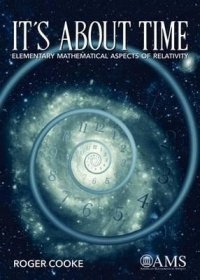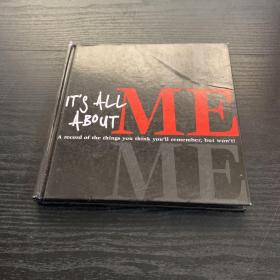
现货It's about Time: Elementary Mathematical Aspects of Relativity[9781470434830]
¥ 618 九五品
仅1件
作者Cooke, Roger
出版社American Mathematical Society
ISBN9781470434830
出版时间2017-01
装帧精装
纸张其他
页数410页
正文语种英语
上书时间2024-03-27
- 最新上架
商品详情
- 品相描述:九五品
- 商品描述
- This book has three main goals. First, it explores a selection of topics from the early period of the theory of relativity, focusing on particular aspects that are interesting or unusual. These include the twin paradox; relativistic mechanics and its interaction with Maxwell''s laws; the earliest triumphs of general relativity relating to the orbit of Mercury and the deflection of light passing near the sun; and the surprising bizarre metric of Kurt Godel, in which time travel is possible. Second, it provides an exposition of the differential geometry needed to understand these topics on a level that is intended to be accessible to those with just two years of university-level mathematics as background. Third, it reflects on the historical development of the subject and its significance for our understanding of what reality is and how we can know about the physical universe. The book also takes note of historical prefigurations of relativity, such as Euler''s 1744 result that a particle moving on a surface and subject to no tangential acceleration will move along a geodesic, and the work of Lorentz and Poincare on space-time coordinate transformations between two observers in motion at constant relative velocity. The book is aimed at advanced undergraduate mathematics, science, and engineering majors (and, of course, at any interested person who knows a little university-level mathematics). The reader is assumed to know the rudiments of advanced calculus, a few techniques for solving differential equations, some linear algebra, and basics of set theory and groups.
相关推荐
-
![现货It's All About Love[9781796017755]](https://www0.kfzimg.com/sw/kfz-cos/kfzimg/17733071/af4c4393ce6e5762_s.jpg)
现货It's All About Love[9781796017755]
九五品上海
¥ 140.00
-
![现货It's All About Shoes[9781632100122]](https://www0.kfzimg.com/sw/kfz-cos/kfzimg/17733071/3597309f2dc6d5db_s.jpg)
现货It's All About Shoes[9781632100122]
九五品上海
¥ 148.00
-

IT'S ABOUT TIME
八品北京
¥ 15.00
-

It's about Time
九品杭州
¥ 100.00
-
![现货It's Not All about You[9789027204158]](https://www0.kfzimg.com/sw/kfz-cos/kfzimg/17733071/35c8ae4bd3d0f9e0_s.jpg)
现货It's Not All about You[9789027204158]
九五品上海
¥ 974.00
-

CD: It's About Time
八五品成都
¥ 18.00
-

CD: It's About Time
八五品成都
¥ 15.00
-

What's It All About?
八五品杭州
¥ 228.00
-

IT'S ALL ABOUT ME
八五品北京
¥ 280.00
-

It's All About Kids
八品北京
¥ 50.00
— 没有更多了 —
![现货It's about Time: Elementary Mathematical Aspects of Relativity[9781470434830]](https://www0.kfzimg.com/sw/kfz-cos/kfzimg/17733071/1f36d821b77f9314_b.jpg)

![现货Materials and Technologies of Modern Production[9783036401683]](https://www0.kfzimg.com/sw/kfz-cos/kfzimg/17733071/5fd2824531e165d7_s.jpg)
![现货Introduction to Container Ship Operations and Onboard Safety[9781032155425]](https://www0.kfzimg.com/sw/kfz-cos/kfzimg/17733071/58b7ff43ef7909ee_s.jpg)
![现货Electrophosphorescent Materials and Devices[9789814877343]](https://www0.kfzimg.com/sw/kfz-cos/kfzimg/17733071/18cc1d77bcb7b488_s.jpg)
![现货Organic Semiconductors for Optoelectronics[9781119146100]](https://www0.kfzimg.com/sw/kfz-cos/kfzimg/17733071/24c85a750c708964_s.jpg)
![现货Advances in Food Rheology and Its Applications[9780081004319]](https://www0.kfzimg.com/sw/kfz-cos/kfzimg/17733071/e0c11603c9119d4d_s.jpg)
![现货Advanced Materials and Sustainable Technologies[9783035727562]](https://www0.kfzimg.com/sw/kfz-cos/kfzimg/17733071/dced675333874c48_s.jpg)
![现货Advanced Materials and Manufacturing Engineering II[9783035712681]](https://www0.kfzimg.com/sw/kfz-cos/kfzimg/17733071/660ccfae75fa8d3e_s.jpg)
![现货Materials in Machinery and Construction[9783035718119]](https://www0.kfzimg.com/sw/kfz-cos/kfzimg/17733071/6f402060775e9daa_s.jpg)
![现货Cereal Grain Quality (Softcover Reprint of the Original 1st 1996)[9789401071772]](https://www0.kfzimg.com/sw/kfz-cos/kfzimg/17733071/f93ca1c96a97403a_s.jpg)
![现货It's about Time: Elementary Mathematical Aspects of Relativity[9781470434830]](/dist/img/error.jpg)

以下为对购买帮助不大的评价